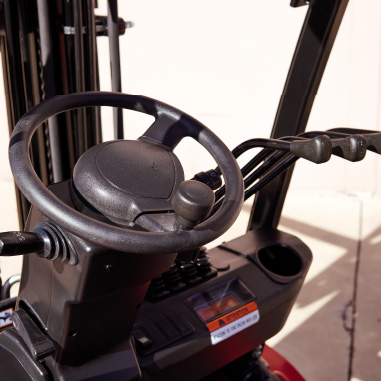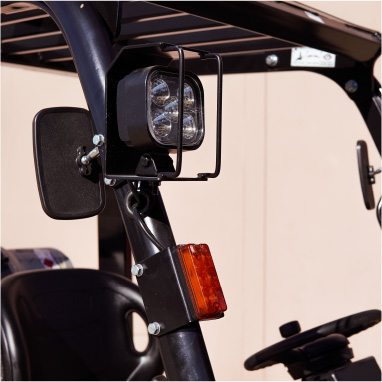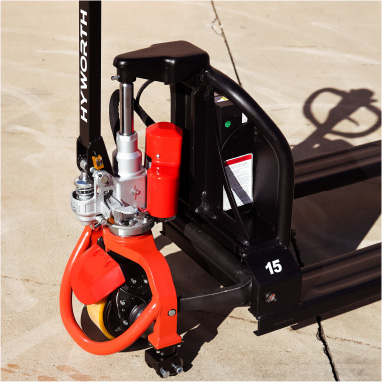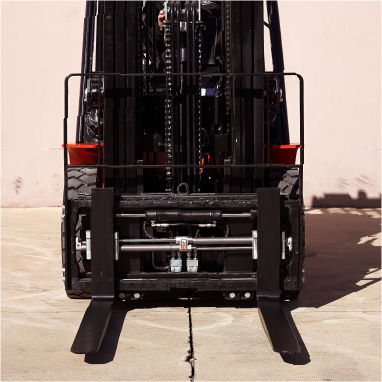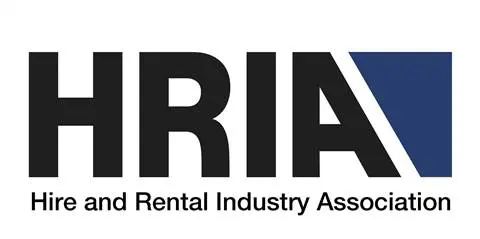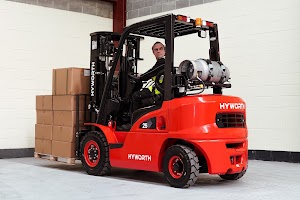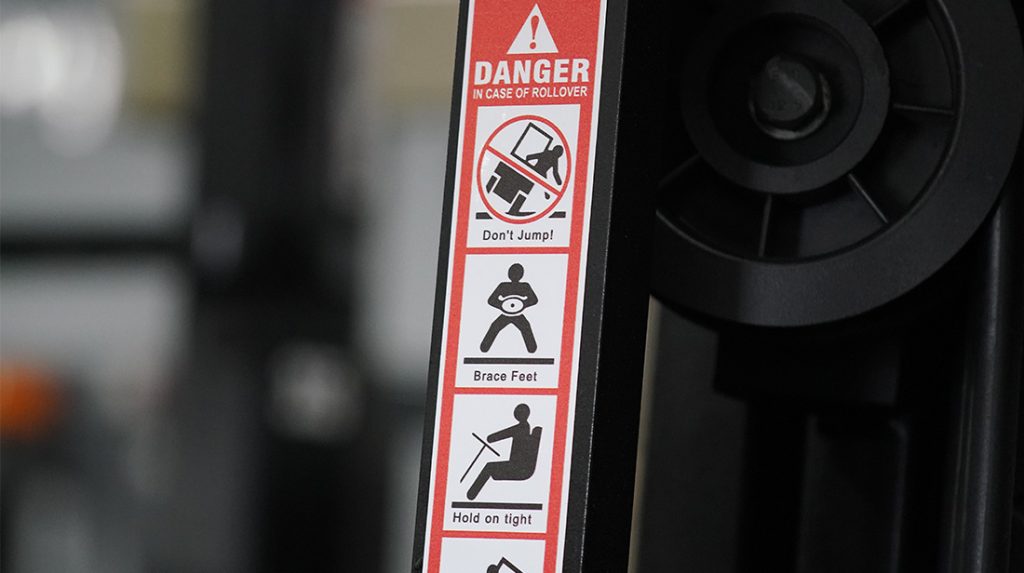
Forklifts are really useful in places like warehouses and building sites, but they can be dangerous if not used correctly. Keeping safe around forklifts is super important for everyone, not just the people driving them. Our comprehensive guide on forklift safety tips about the top 10 tips for keeping safe when using a forklift. These tips are easy to follow and can make a big difference in keeping you and your mates safe at work.
We’ll look at things like checking the forklift before you use it, making sure people walking near forklifts are safe, and why driving slowly and carefully is a must. We’ll also cover how to carry things safely, why it’s important to see clearly, why learning how to use a forklift properly matters, and wearing the right safety gear. Plus, we’ll talk about the right way to handle what you’re carrying, creating a safety-first mindset at work, and why it’s a bad idea to use a forklift if you’ve had alcohol or drugs.
Here’s a quick list of the forklift safety tips we’ll cover:
- Check the forklift before using it.
- Keep people walking near forklifts safe.
- Drive slowly and carefully.
- Handle forks and loads safely.
- Make sure you can see well.
- Learn how to use a forklift properly.
- Wear the right safety gear.
- Handle your load safely.
- Think safety first at work.
- Don’t mix forklifts with alcohol or drugs.
Keep reading to learn more about each of these important tips, and how they help make your workplace safer for everyone.
The importance of forklift safety
Forklifts play a big role in many businesses, but they can also be pretty risky if not used properly. It’s surprising, but each year, lots of accidents happen because of forklifts. In fact, a good number of these accidents cause serious injuries or even deaths. This really shows how important forklift safety is.
Staying safe around forklifts isn’t just about avoiding accidents; it’s also about following the law. In places like Australia, there are strict rules about how to use forklifts safely. If you’re running a business, you’ve got to make sure everyone follows these safety rules. It’s not just about avoiding fines or legal issues; it’s about making sure everyone goes home safe at the end of the day.
So, when we talk about forklift safety tips, we’re not just giving advice; we’re helping you stick to these important rules. Keeping your forklifts in good shape, making sure everyone knows how to use them safely, and watching out for each other are all part of the job. Let’s keep our workplaces safe and sound by putting these forklift safety tips into action.
Forklift safety tips
1: Inspection essentials
One of the most crucial forklift safety tips is to always do a thorough inspection before you start your shift. Think of it like checking your car before a long drive; it’s all about making sure everything’s in good shape.
So, what should you look out for? Here’s a handy list:
Forks and chains: Check for any damage or wear. Bent or cracked forks can be really dangerous.
Tyres: Look for cuts or flat spots. Remember, good tyres mean better control.
Lights and horns: Make sure your lights and horns are working well. They’re key for letting others know you’re around.
Brakes: Test them out. You definitely need these to work properly!
Steering: Give it a go and see if it feels right. Any stiffness or odd sounds? That’s a red flag.
Levers and controls: Try them out to ensure they respond correctly.
Oil, fuel, and hydraulics: Check for leaks – they’re not just messy, they can be hazardous.
Safety features: Like seatbelts and guards. They’re there for a reason, so make sure they’re in top shape.
Doing these checks doesn’t take long, but it can make a huge difference. It’s not just about preventing breakdowns; it’s about keeping you and everyone around you safe. Remember, a well-maintained forklift is a safe forklift.
2: Pedestrian safety protocols
When talking about forklift safety tips, we can’t ignore the people walking around the forklifts. In busy places like warehouses, keeping pedestrians safe is a big deal.
Here’s how to make sure everyone’s safe:
Clear signage: Put up signs that show where forklifts are likely to be. This alerts everyone to be extra careful in those areas.
Floor markings: Use bright lines on the floor to mark out safe walking paths and forklift routes. This helps keep foot traffic and forklifts separate.
Mirrors at corners: Fit mirrors at blind spots so drivers and walkers can see each other coming. It’s a simple way to avoid surprises.
Training for everyone: It’s not just forklift drivers who need to know about safety. Anyone working in the area should understand the risks and how to stay safe.
Use of horns and lights: Forklifts should use their horns at intersections to let people know they’re coming. Lights can also help, especially in dim areas.
Speed limits: Slow and steady does it. Setting speed limits for forklifts helps keep everyone safe.
Communication is key: Encourage everyone to make eye contact and acknowledge each other. A simple nod can mean ‘I see you, and it’s safe to go’.
By following these steps, we can make sure that everyone in the warehouse stays safe. Remember, safety is a team effort!
3: Speed limits
One of the top forklift safety tips is to always stick to the speed limit. It’s easy to think that going a bit faster will get the job done quicker, but speeding is risky.
Why is speed such a big deal? Well, forklifts are heavy and can’t stop quickly, especially when carrying a load. If you’re going too fast, you might not be able to stop in time to avoid an accident. Also, when you turn corners too quickly, there’s a real risk of the forklift tipping over. That’s dangerous for the driver and anyone nearby.
Here’s what you can do:
Follow posted limits: Pay attention to the speed limits set in your workplace. They’re there for a reason.
Adapt to conditions: Sometimes, you might need to go even slower than the posted limit, like in crowded areas or when the floor is slippery.
Post speed signs: Make sure there are clear signs showing the speed limits. This is a good reminder for everyone.
Regular reminders: It’s a good idea to remind drivers about the importance of speed limits in safety meetings.
Monitor and enforce: Keep an eye on how fast people are driving and make sure everyone follows the rules.
By keeping speeds down, you’re not just following the rules; you’re making sure everyone stays safe. Remember, a few extra minutes are worth it when it comes to safety.
4: Fork and load handling
Handling and transporting loads safely is a key part of forklift safety tips. It’s all about balance and careful movement.
Here are some key guidelines:
Correct fork height: When driving, keep your forks about 15 cm (6 inches) off the ground. This prevents scraping the ground and maintains stability.
Load stability: Make sure your load is stable and secure before moving. A wobbly load can easily fall off.
Even distribution: Place the load evenly across both forks. This helps keep the forklift balanced.
Drive smoothly: Avoid sudden moves. Start, stop, turn, and lift smoothly to keep the load steady.
Visibility is key: Always make sure you can see where you’re going. If the load blocks your view, drive in reverse, keeping a careful eye on your surroundings.
Slopes and ramps: When driving on a slope, keep the load uphill from you. This prevents it from sliding off the forks.
5: Clear vision
Having a clear vision is a cornerstone in forklift safety tips. When you’re operating a forklift, being able to see clearly where you’re going and what’s happening around you is crucial. This is not just about avoiding collisions, but also about efficiently and safely navigating through the workspace.
Here’s how you can enhance visibility and situational awareness:
Keep the load at the right height: Make sure your load isn’t blocking your view. If it’s too high and you can’t see, it’s safer to drive in reverse.
Clean and clear windows and mirrors: Regularly wipe down the forklift’s windows and mirrors. This helps you get a better view of your surroundings.
Use lights and indicators: Turn on your lights, especially in dimly lit areas. Use indicators to signal your movements to others.
Be extra cautious in blind spots: Use mirrors and proceed slowly when moving around corners or through doorways where visibility is limited.
Ask for a spotter if needed: In tricky situations, having a co-worker guide you can be a big help.
Stay alert: Keep an eye out for pedestrians, other vehicles, and obstacles in your path.
Remember, good visibility is key to safe forklift operation. It’s not just about what you can see, but also how quickly you can react to what’s happening around you. Stay alert and keep your vision clear, and you’ll be contributing to a safer work environment for everyone.
6: Training and certification
Focusing on training and certification is a critical component of forklift safety tips. Here’s why they are essential:
Comprehensive training: Proper training covers not just basic forklift operation but also safety procedures and machine mechanics. This prepares operators for various workplace scenarios.
Qualified instructors: Learning from experienced instructors ensures that operators receive accurate and practical knowledge, crucial for safe forklift operation.
Certification importance: Obtaining certification verifies that an operator has met specific standards in forklift operation, essential for legal and safety compliance.
Legal requirement: In many regions, including Australia, certification is not just beneficial but legally required, emphasising its importance in workplace safety.
Employer compliance: Certification helps employers maintain a skilled, knowledgeable workforce, ensuring adherence to safety standards.
Regular refresher courses: These courses keep operators’ skills sharp and up-to-date with the latest safety guidelines and forklift technologies.
Evolving safety practices: As workplace environments and safety practices change, staying informed through ongoing training is key to safe operation.
In essence, training and certification go beyond mere formalities; they are fundamental for ensuring safety and compliance in forklift operation, equipping operators with essential skills and keeping them abreast of the latest safety practices.
7: Appropriate Personal Protective Equipment (PPE)
When it comes to forklift safety tips, wearing the right Personal Protective Equipment (PPE) is non-negotiable. Here’s what you need to know about PPE for forklift operation:
Safety helmets: Essential for protecting your head. In case of any falling objects or bumps, a helmet can be a lifesaver.
High-visibility vests: These make sure you’re seen by forklift operators and other workers, especially in busy or dimly lit areas.
Safety shoes: Steel-toed boots or safety shoes are a must. They protect your feet from heavy objects and give you better grip and stability.
Gloves: Depending on the work, gloves can protect your hands from cuts, and scrapes, and improve grip.
Eye protection: If there’s a risk of flying debris or dust, safety goggles or glasses are crucial to protect your eyes.
Hearing protection: In noisy environments, earplugs or earmuffs can prevent long-term hearing damage.
Each piece of PPE plays a role in ensuring your safety while operating or working around forklifts. It’s not just about personal safety; it’s about creating a safe working environment for everyone. Remember, the right PPE can make a big difference in preventing injuries, so always gear up before starting your shift.
8: Safe load management
Handling loads safely is a crucial part of forklift safety tips. It’s all about how you manage and move the loads without risking safety. Here are some techniques for safe and efficient load handling:
Proper load balancing: It’s vital to distribute the weight evenly on the forks. An unbalanced load can make the forklift unstable and increase the risk of tipping over.
Secure the load: Make sure the load is stable and secure before moving. If it looks shaky or loose, reorganize it to prevent falls.
Correct lifting and lowering: Lift and lower loads smoothly. Jerky movements can cause loads to shift and become unstable.
Driving with load: When moving, keep the load low to the ground to maintain stability. However, it should be high enough to clear any obstacles on the floor.
Avoid overloading: Never exceed the forklift’s weight capacity. Overloading can lead to accidents and mechanical failures.
Speed and turns: Maintain a safe speed and make turns gradually. Quick turns with a loaded forklift can cause the load to shift or the forklift to tip.
Visibility: Ensure the load does not obstruct your view. If necessary, travel in reverse to get a better view.
By following these safe load management techniques, you can significantly reduce the risk of accidents. Remember, it’s not just about moving the load from point A to point B; it’s about doing it safely.
9: Implementing a safety-first culture
Creating a safety-first culture is a key element in forklift safety tips. It’s about building an environment where safety is the top priority for everyone, not just something written in the policy manuals. Here’s how fostering this culture can reduce risks:
Shared responsibility: Everyone, from managers to workers, should feel responsible for safety. This means looking out for each other and speaking up when something doesn’t seem safe.
Regular safety meetings: Hold meetings where staff can discuss safety, share concerns, and suggest improvements. This keeps everyone aware and engaged.
Continuous training: Regular training sessions reinforce safe practices and keep everyone updated on new safety protocols.
Encouraging reporting: Make it easy and non-threatening for staff to report safety issues or near-misses. Learning from these incidents can prevent future accidents.
Leading by example: Management should lead by example. When leaders prioritise safety, it sets a tone for the whole team.
Rewarding safe behaviour: Recognise and reward safe practices. This can motivate staff to adhere to safety guidelines.
Open Communication: Encourage open communication about safety. Employees should feel comfortable sharing ideas and concerns without fear of reprisal.
10: Substance-free zone
Maintaining a substance-free zone is critical in forklift safety tips. Operating forklifts under the influence of any substance – be it alcohol, drugs, or certain medications – significantly raises the risk of accidents. Here’s why:
Impaired judgement and reaction time: Substances can slow down reaction times and impair judgement. When operating heavy machinery like forklifts, quick and clear decision-making is essential.
Increased risk of accidents: Being under the influence can lead to misjudging distances, speeds, and risks, increasing the likelihood of collisions, tip-overs, and other accidents.
Legal consequences: Operating a forklift while under the influence is not only dangerous but also illegal. It can lead to serious legal consequences for both the operator and the employer.
Workplace safety policies: Employers should have strict policies against substance use in the workplace. Regular checks and a clear policy can help maintain a safe working environment.
Conclusion
As we wrap up our journey through these essential forklift safety tips, it’s important to remember that safety in forklift operations is a continuous commitment. From conducting regular inspections to maintaining a substance-free zone, every tip we’ve discussed plays a vital role in ensuring a safer workplace.
Let’s recap the key points:
- Regular inspections are a must to catch any potential issues early.
- Pedestrian safety is as crucial as operator safety.
- Adhering to speed limits prevents accidents.
- Proper fork and load handling ensure stability and safety.
- Clear visibility is key to avoiding hazards.
- Training and certification are non-negotiable for skill and compliance.
- Appropriate PPE is essential for personal safety.
- Safe load management is critical for stability and efficiency.
- Cultivating a safety-first culture makes safety a shared responsibility.
- A substance-free zone is vital for clear decision-making and legal compliance.
Remember, forklift safety is not just about following rules; it’s about creating an environment where every team member comes to work knowing they are in a safe space.
Choosing the right forklift for your needs is as important as following these safety tips.
If you’re uncertain about which forklift suits your operations best, consider reaching out to Hyworth Forklifts. Our expertise in the field can guide you in selecting a forklift that meets your specific requirements, ensuring efficiency, safety, and compliance.
Let’s work together towards a safer working environment where safety is not just a priority but a part of our everyday practice.
